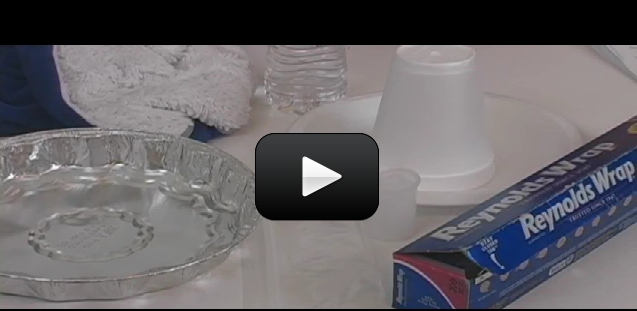Jupiter not only has the biggest lightning bolts we’ve ever detected, it also shocks its moons with a charge of 3 million amps every time they pass through certain hotspots. Some of these bolts are cause by the friction of fast-moving clouds. Today you get to make your own sparks and simulate Jupiter’s turbulent storms.
Electrons are too small for us to see with our eyes, but there are other ways to detect something’s going on. The proton has a positive charge, and the electron has a negative charge. Like charges repel and opposite charges attract.
Materials
- Foam plate
- Foam cup
- Wool cloth or sweater
- Plastic baggie
- Aluminum pie pan
- Aluminum foil
- Film canister or M&M container
- Nail (needs to be a little longer than the film canister)
- Hot glue gun or tape
- Water


Yes, it has to be an insulating material, so foam is a great choice.
Does the cup have to be foam?
Hmmm..maybe I am not understanding your question. Try again?
But I don’t know if that means any thing.
I’m sorry I ment to say foam plate. 🙂
If the pie plate had a plus and minus charge, then it’d be balanced and you wouldn’t see an attraction or repulsion at all. The paper has both + and – charge, which is why it doesn’t stick to everything…just the pie plate. The pie plate has a charge on it, which attracts the opposite charge in the paper (since it has both).
I think we somehow gave the pie plate both a + and – charge, because the pie plate and the paper plate kept stiking together.